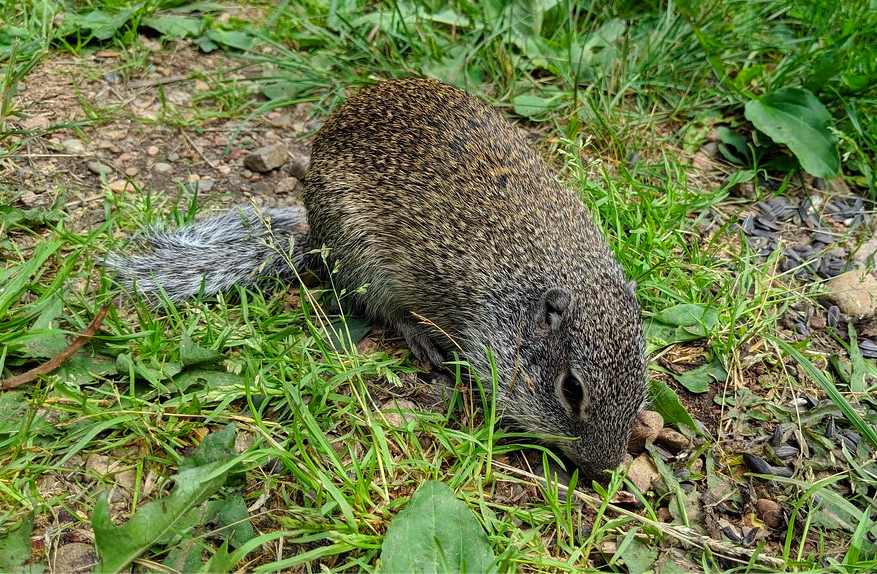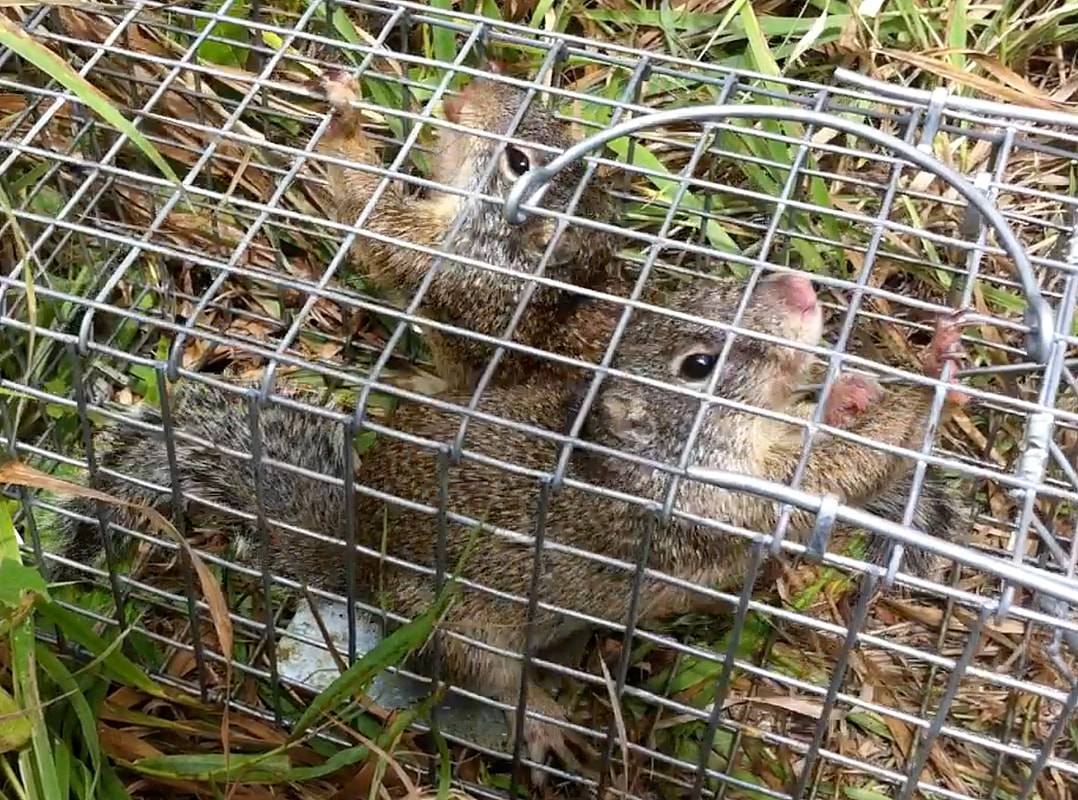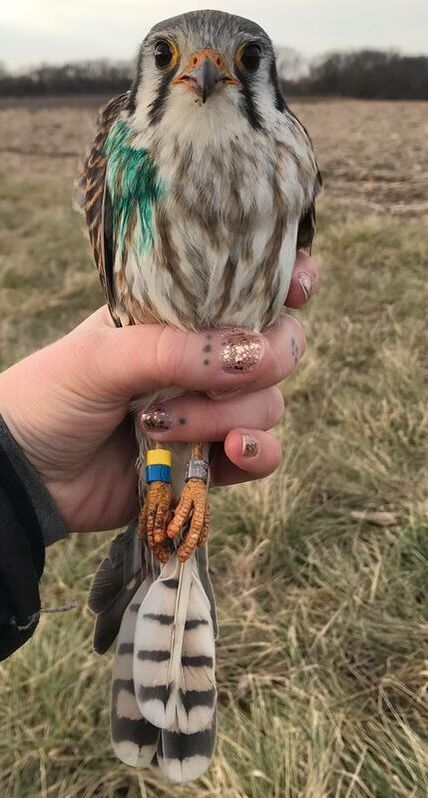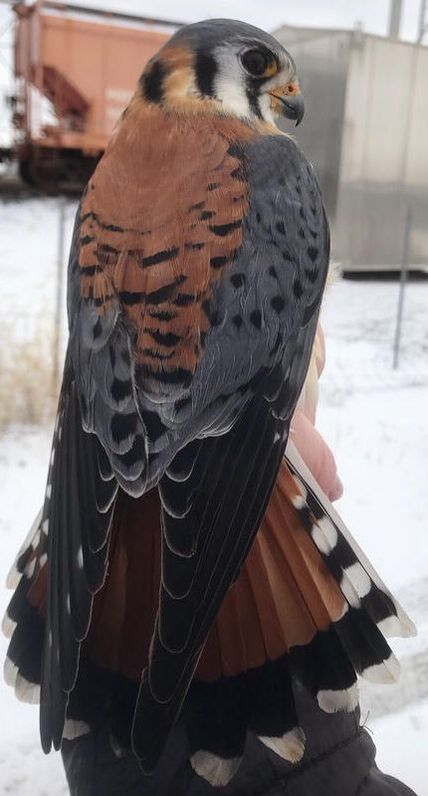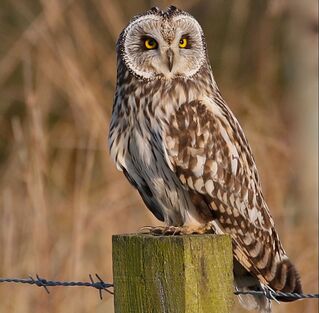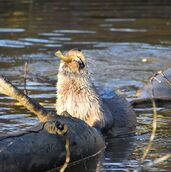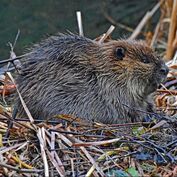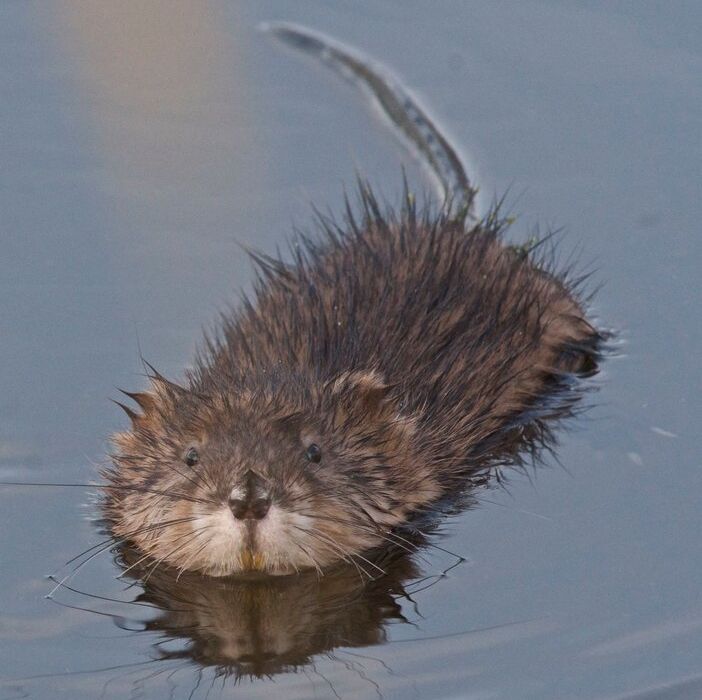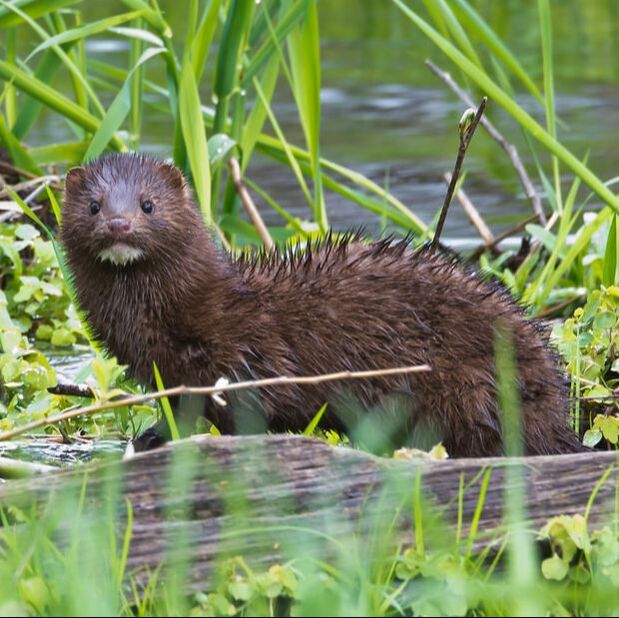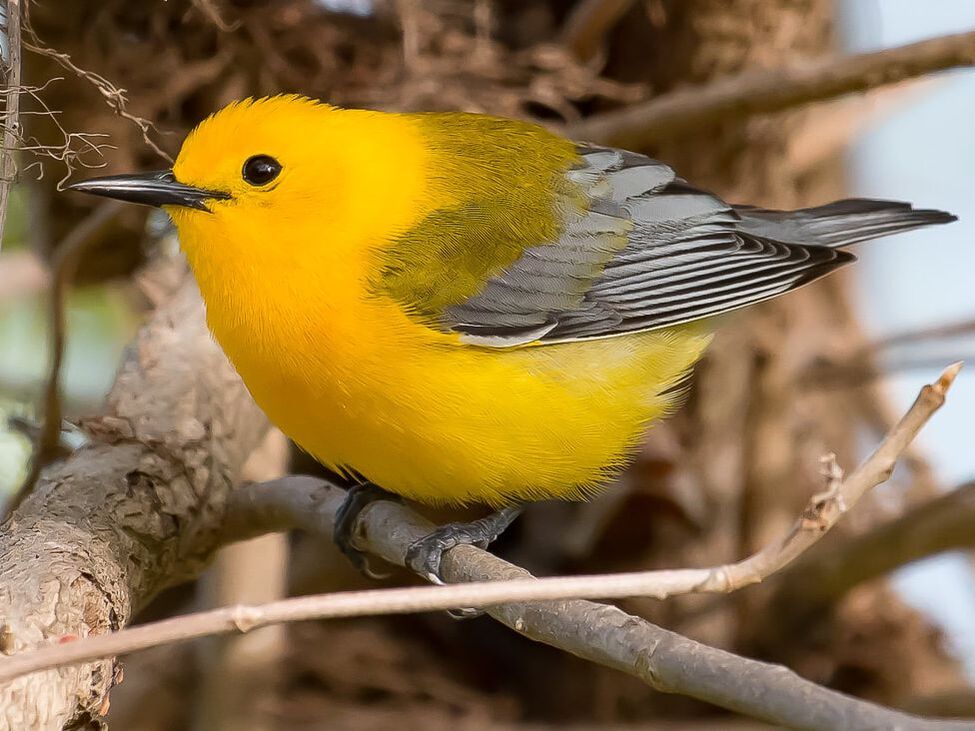Illinois Osprey Hacking ProgramOsprey (Pandion haliaetus) is a state-endangered species in Illinois. With the funding from the U.S. Fish & Wildlife Service and the support of the Illinois Department of Natural Resources, we have been working to establish breeding colonies of osprey via hacking at multiple sites in central Illinois. “Hacking” is the process of releasing juvenile raptors in suitable habitats as a way of establishing populations. Our goal is to restore self-sustained breeding populations of Ospreys in Illinois. This project allows us to assess the adequacy and effectiveness of hacking techniques to recover Osprey populations at multiple scales. We apply population viability analysis and habitat suitability modeling to fine-tune the scope of our hacking program. We also investigate the movement ecology, including migration, of hacked ospreys.
|
|
Franklin's Ground SquirrelDeclines in Franklin’s ground squirrel (Poliocitellus franklinii) populations in the Midwest have been widely attributed to loss and fragmentation of tallgrass prairie and savanna habitats due to intensive agricultural practices. To better understand the factors influencing the population dynamics of Franklin’s ground squirrels, we have an on-going demographic study of the species. Our results of mark-recapture and radio-tracking suggest no exchange of individuals between different local populations in our study area. Habitat fragmentation threatens the Franklin’s ground squirrel by decreasing gene flow among populations, which further intensifies problems associated with inbreeding and genetic drift. Conservation strategies for any declining species would be more likely to succeed when patterns of genetic diversity and population divergence are considered. Besides expanding our state-wide survey efforts for the species, we have begun to investigate the range-wide genetic diversity of Franklin’s ground squirrels in selected Midwestern states as well as local population genetic structures within Illinois.
|
American KestrelAmerican kestrels (Falco sparverius), the smallest and most common falcon in North America, have a population trend that is declining or uncertain throughout most of the species’ range. Factors contributing to such a decline are not fully understood. Survival of individual kestrels during migration or in their wintering grounds is considered one of those contributing factors. In the winter months, both migratory and resident kestrels are present in Central Illinois. However, few studies on wintering kestrel ecology in the area exist. Therefore, we conduct trapping, marking, and monitoring of American kestrels in Sangamon County and surrounding areas in order to investigate the survival of wintering individuals and return of past individuals.
|
Short-eared OwlShort-eared owls (Asio flammeus) have experienced a steep decline over much of their North American range during the past half-century. Habitat loss and degradation at their wintering grounds, and in places where the owls occur year-round, are considered a major threat for the species. We are interested in the winter ecology of short-eared owls by investigating factors influencing their selection of winter roosts, their diet, and their movement patterns on the wintering grounds. We would like to know if wintering short-eared owls show differential use of various habitats and landscape features.
|
Semi-Aquatic MammalsSemi-aquatic mammals are a unique group of mammals that rely on terrestrial and aquatic habitats for survival. River otter (Lontra canadensis), muskrat (Ondatra zibethicus), beaver (Castor canadensis), and mink (Neovison vison) all belong to this group of animals. They assume critical roles in the ecosystems they inhabit by serving as ecosystem engineers, apex predators, and indicators of ecosystem health. We have been investigating the spatial and temporal habitat use by semi-aquatic mammals, along with species interactions, at the Emiquon Wetland Complex, using camera traps. We hope to provide new insight into semi-aquatic mammal habitat use and species interactions at this particular wetland complex and others similar to it.
|
Prothonotary WarblerThe Prothonotary Warbler (Protonotaria citrea) is a secondary cavity-nesting species native to the Southeastern United States. This species is currently in decline due to habitat fragmentation and a loss of food resources. Students in Ting Lab will be monitoring the use of artificial nesting boxes installed in local bottomland forest in an effort to rehabilitate the Prothonotary Warbler population in central Illinois. A number of nesting boxes will be constructed and placed in the most suitable habitat sites as determined by data collected from previous successful attempts. These boxes will then be periodically checked and examined to determine their effectiveness in increasing the viability of the local Prothonotary Warbler population.
|
Home Team Research News Field Work Life in SPI Collaborators Get Involved
Dr. Tih-Fen Ting
Conservation Ecology Lab
Department of Environmental Studies
University of Illinois Springfield
Springfield, Illinois 62703-5407
Conservation Ecology Lab
Department of Environmental Studies
University of Illinois Springfield
Springfield, Illinois 62703-5407
